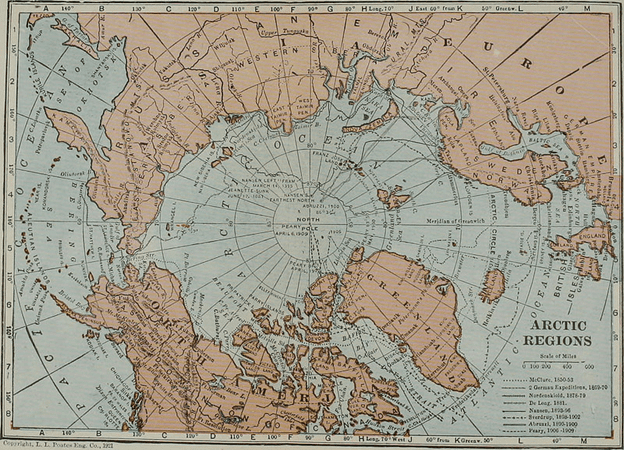
Camels are rightfully known as “the ships of the desert†because of their impressive ability to carry up to 500 lbs on their back! While camels seem to conjure up images of pyramids and arid, desolate seas of sand dunes, they weren't always the quintessential desert-dwelling beasts that they are today.
Camels actually originated in North America, not Asia or Africa. Scientists have been digging up the fossilized remains of mammals belonging to the Camelus genus dating back to approximately 13,000 years ago in places such as California, Nevada, and Arizona. However, in 2006, Dr. Natalia Rybczynski and her team discovered the mummified remains of a cloven-hoofed mammal in the high Arctic region. She found the remains on Ellesmere Island, Nunavut, suggesting that camels originally inhabited the remote Canadian Taiga (also known as Boreal Forest). This environment is found in today's subarctic regions of the world such as Canada and Russia.

They were able to piece together the 30 bone fragments through a 3D surface scanner and found that they had discovered a 3.5 million year old camel tibia, or leg bone. Of the two types of camels still alive today: Dromedary and Bactrian, they discovered an ancient camel most closely related to the one-humped Dromedary camel.
In order to properly identify the remains, Dr. Rybczynski utilized a process known as collagen fingerprinting. Collagen is a common protein found in bone. In order to properly identify the remains, they created a collagen profile by processing the collagen through a mass spectrophotometer, an instrument that emits various wavelengths of light. Through this technique, they were able to identify the unique chemical profiles of samples and confirm that the remains belonged to a High Arctic Camel. Based upon the size of the tibia, the camels would have been 30% larger than modern day Dromedary camels, standing at 9 feet tall!

How did camels transition from the high Arctic region to inhabiting Asia and Africa?
It is believed that these giant Arctic camels crossed to Eurasia over Bering Isthmus, the land bridge connecting Alaska to Russia. It turns out that the very characteristics that make camels suitable for the desert environment helped them survive the harsher northern climate.
Take, for example, their broad feet which help them trek across shifting sandy terrain. These wide feet are also believed to have served camels as a form of snowshoes, distributing their weight and preventing them from sinking into the snow. Additionally, contrary to common belief, their famed humps do not contain water (I know right?!). Instead, the humps contain fat. By having all of the fat congressed in one area, it allows heat to dissipate easily by reducing the surface area of insulating fat tissue. This adaption that is so vital for desert survival may also have been advantageous in the boreal forest biome they inhabited. It is believed that the reserves of fat allowed these gangling creatures to go days on end without food, especially in the winter when food would have been scarce.
Understanding evolutionary history allows us to better understand the present, as well as predict and shape the future. Because High Arctic camels lived during the mid-Pliocene Epoch approximately 3.5 million years ago when the world was 2-3°C (~3.6°F) warmer, scientists believe that these camels can present insight into what our future will look like as global temperatures increase. The Arctic origins of the camel not only provides a possible indication of future conditions, but it also illustrates the simplicity of evolution and how our understanding of our own evolutionary history is constantly changing.
About the Author
 Gazal Arora is an undergraduate Cellular Biology major at the University of Georgia. When she's not studying at the Science Library, she can be found hiking, reading, or Snellibrating. For more information you can email her at ga25144@uga.edu or follow her on Twitter: @gazalarora_. Gazal Arora is an undergraduate Cellular Biology major at the University of Georgia. When she's not studying at the Science Library, she can be found hiking, reading, or Snellibrating. For more information you can email her at ga25144@uga.edu or follow her on Twitter: @gazalarora_. |
About the Author
- athenssciencecafehttps://athensscienceobserver.com/author/athenssciencecafe/April 17, 2020
- athenssciencecafehttps://athensscienceobserver.com/author/athenssciencecafe/April 12, 2020
- athenssciencecafehttps://athensscienceobserver.com/author/athenssciencecafe/April 3, 2020
- athenssciencecafehttps://athensscienceobserver.com/author/athenssciencecafe/March 30, 2020







